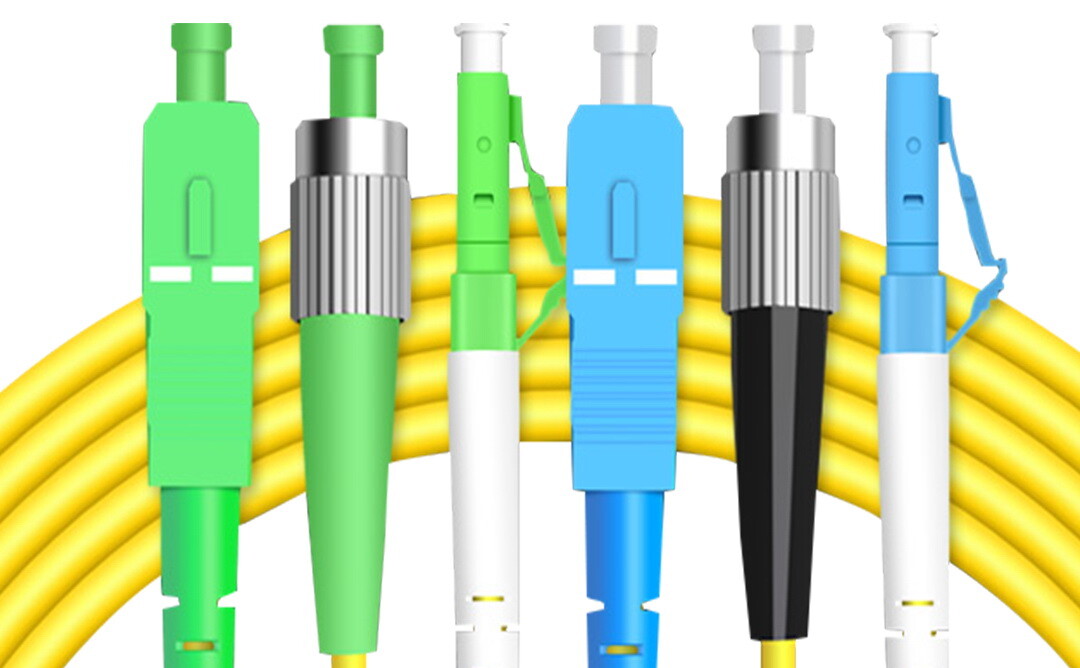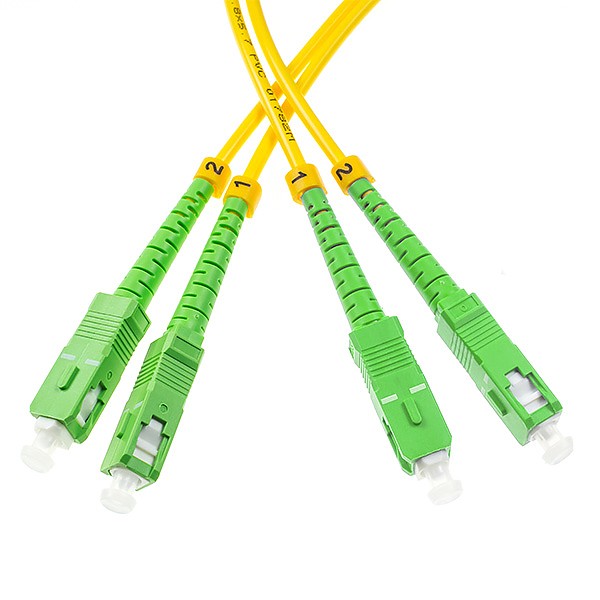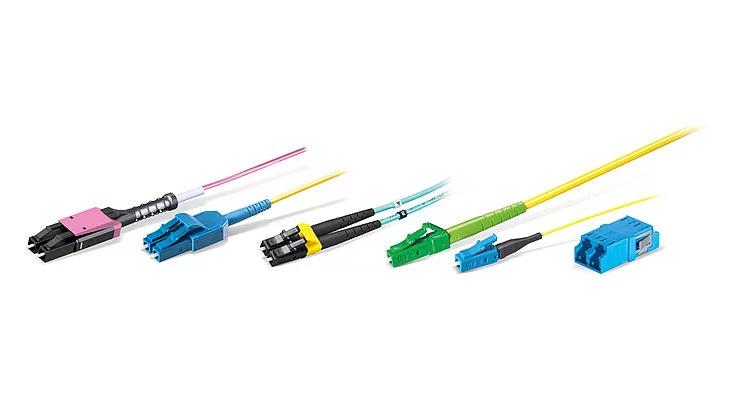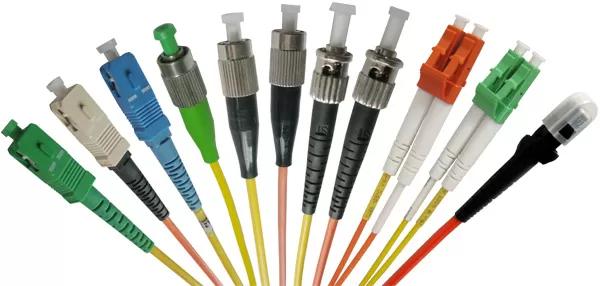Fiber optic patch cords, including the duplex fiber optic patch cord and the armoured fiber optic patch cord, play a pivotal role in modern connectivity, enabling high-speed data transfer and reliable network performance. Their importance continues to rise as industries adopt technologies like 5G and Fiber-to-the-Home (FTTH) services. The global fiber optical cable market is projected to grow from $78.56 billion in 2023 to $84.85 billion in 2024, driven by the expansion of data centers and smart cities. This article identifies and reviews the best fiber optic patch cords for 2025, including options like the fiber optic patch cord SC/APC, ensuring readers can make informed decisions for their connectivity needs.
Key Takeaways
- Fiber optic patch cords help move data fast and keep networks steady. They are important for things like 5G and home internet.
- When picking a fiber optic patch cord, think about its length, type of connector, and how strong it is. This helps it work well with your system.
- Buying good fiber optic patch cords can save money over time. They last longer and need less fixing or replacing.
Why Fiber Optic Patch Cords Matter
Role in Modern Connectivity
Fiber optic patch cords serve as the backbone of modern communication networks. They enable seamless data transmission across various industries, including telecommunications, education, and IT. Their ability to handle high-speed data transfer with minimal signal loss makes them indispensable in environments requiring reliable connectivity. For instance, a telecommunications company reported a 40% increase in network capacity after integrating advanced patch cords, highlighting their transformative impact.
The growing reliance on fiber optics aligns with the expansion of data centers and the deployment of 5G networks. According to market research, the global data center market is projected to reach $1 trillion by 2025. This growth underscores the critical role of fiber optic patch cords in supporting scalable and high-performance infrastructure. Additionally, their eco-friendly designs cater to the increasing demand for sustainable solutions, further solidifying their importance in modern connectivity.
| Case Study | Outcome | Quote |
|---|---|---|
| IT Solutions Provider | Improved data transmission speeds | “The OM2 patch cords have transformed our network performance.” |
| Telecommunications Company | 40% increase in network capacity | “The technical specifications and performance exceeded expectations.” |
| University | Enhanced system efficiency | “The performance metrics showed significant improvements.” |
Key Features to Look For in a Fiber Optic Patch Cord
Selecting the right fiber optic patch cord involves evaluating several key features. Length and use are critical considerations, as cords typically range from a few feet to 50 feet, catering to confined spaces. Connector types, such as LC, SC, and MPO, ensure compatibility and ease of installation. Fiber types, including single-mode for long distances and multimode for shorter ranges, address diverse application needs.
Durability is another essential factor. High-quality patch cords feature robust jacketing to protect against moisture and abrasion, making them suitable for frequent handling. Additionally, application specificity ensures that the cords meet the unique requirements of network infrastructure. For example, helically stranded cables offer superior pulling strength and reduced bending stress, making them ideal for high-bandwidth applications.
| Feature | Description |
|---|---|
| Length and Use | Typically ranges from a few feet up to 50 feet, designed for patching devices in confined areas. |
| Connector Types | Pre-terminated connectors (LC, SC, ST, MTP/MPO) for easy installation. |
| Fiber Types | Available in single-mode (for long distances) and multimode (for shorter distances) options. |
| Jacketing and Durability | General-purpose outer jacket for protection against moisture and abrasion, suitable for frequent handling. |
| Application Specificity | Designed for general-purpose connectivity within network infrastructure. |
Unordered List of Additional Features:
- Helically stranded cables reduce bending stress and enhance durability.
- Bit Error Rate (BER) testing confirms high performance in demanding applications.
- Crush resistance exceeds industry standards, ensuring reliability in various environments.
Top Fiber Optic Patch Cords for 2025
Product 1: Dowell High-Performance LC to LC Patch Cord
The Dowell High-Performance LC to LC Patch Cord stands out as a reliable solution for seamless connectivity. Designed for high-speed data transmission, this patch cord features low insertion loss and high return loss, ensuring minimal signal degradation. Its robust construction includes a durable outer jacket that resists moisture and abrasion, making it suitable for both indoor and outdoor applications.
This patch cord is ideal for environments requiring consistent performance, such as telecommunications networks and enterprise setups. Its pre-terminated LC connectors simplify installation, reducing deployment time and errors. With a focus on scalability, the Dowell LC to LC Patch Cord supports advanced network configurations, including 10G and 40G Ethernet standards.
Tip: Dowell’s LC to LC Patch Cord is a trusted choice for professionals seeking reliability and efficiency in their network infrastructure.
Product 2: MPO to LC Fiber Optic Patch Cord for Data Centers
The MPO to LC Fiber Optic Patch Cord is engineered for high-density environments like data centers. Its advanced multi-core parallel technology supports high-speed transmission standards, including 40G, 100G, and 400G Ethernet. This patch cord ensures efficient signal transmission with an insertion loss of ≤0.35dB and a return loss of ≥55dB.
| Feature | Description |
|---|---|
| High-speed transmission | Supports 40G, 100G, 400G and higher-speed Ethernet standards through multi-core parallel technology. |
| Low insertion loss | Insertion loss ≤0.35dB, return loss ≥55dB, ensuring efficient signal transmission. |
| Durability | Supports over 500 plug-ins and pull-outs, suitable for frequent maintenance. |
| Pre-terminated technology | Reduces on-site welding errors, improving deployment efficiency by over 60%. |
| Compatibility and scalability | Fully compatible with MPO standards, supports hot plugging and flexible network topologies. |
| High-density design | Supports 12-core, 24-core, or higher-density fiber transmission, improving space utilization. |
This patch cord’s high-density design optimizes space utilization, making it a preferred choice for modern data centers. Its compatibility with MPO standards ensures seamless integration into existing network setups, while its durability supports frequent maintenance without compromising performance.
Product 3: SC to SC Single-Mode Fiber Optic Patch Cord
The SC to SC Single-Mode Fiber Optic Patch Cord delivers exceptional performance for long-distance data transmission. Its pull-push mechanism ensures secure connections, while its 2.5mm ferrule size enhances durability. Independent testing confirms its ability to withstand up to 1,000 mating cycles, making it a cost-effective option for general-purpose applications.
| Feature | SC Connector | LC Connector |
|---|---|---|
| Ferrule Size | 2.5mm | 1.25mm |
| Mechanism | Pull-push Mechanism | Latch Locking |
| Cost | More Cost-effective | Expensive |
| Durability | 1000 Mating Cycles | 500 Mating Cycles |
| Insertion Loss | 0.25-0.5db | 0.25-0.5db |
| IEC Specification | 61754-20 | 61754-4 |
| Application | General purposes | High-density networks |
This patch cord adheres to IEC 61754-20 specifications, ensuring compatibility with industry standards. Its low insertion loss of 0.25-0.5dB guarantees efficient signal transmission, making it a reliable choice for telecommunications and IT networks.
Product 4: Multi-Mode Fiber Optic Patch Cord for Business Applications
The Multi-Mode Fiber Optic Patch Cord is tailored for business applications requiring high-speed connectivity over shorter distances. Its multimode design supports bandwidth-intensive tasks, such as video conferencing and cloud computing. The cord’s helically stranded construction reduces bending stress, enhancing durability and reliability.
This patch cord is available in various lengths, catering to diverse office setups. Its pre-terminated connectors simplify installation, while its crush-resistant jacketing ensures longevity in demanding environments. Businesses can rely on this patch cord for consistent performance and scalability as they expand their network infrastructure.
Note: The Multi-Mode Fiber Optic Patch Cord is an excellent choice for small and medium-sized enterprises seeking cost-effective connectivity solutions.
Comparison of Features and Performance
Speed and Bandwidth Capabilities of Fiber Optic Patch Cords
Fiber optic patch cords excel in delivering unmatched speed and bandwidth compared to traditional cabling solutions. Their ability to transmit data at high speeds with minimal signal loss makes them indispensable for modern networks. Single-mode and multi-mode cables cater to different performance needs, allowing users to optimize their network designs. Single-mode OS2 fiber, for instance, is highly effective for long-distance applications exceeding 2000 meters. Its low attenuation and broad dispersion range ensure reliable performance, making it ideal for metropolitan and wide-area networks.
Testing methodologies further highlight the superior performance of fiber optic patch cords. End-to-end attenuation tests measure total signal loss, while optical time-domain reflectometers (OTDRs) detect faults and verify fiber integrity. Connector loss measurements ensure that connections maintain optimal signal quality. These tests confirm that fiber optic patch cords consistently meet high-performance standards, even in demanding environments.
Note: Regular testing, including OTDR analysis, helps maintain the integrity of fiber optic networks and ensures consistent speed and bandwidth.
Durability and Build Quality Across Leading Brands
Durability plays a crucial role in the performance of fiber optic patch cords. High-quality cords feature robust jacketing that resists moisture, abrasion, and environmental stress. For instance, helically stranded cables reduce bending stress, enhancing their lifespan. Leading brands prioritize durability by adhering to industry standards, such as IEC specifications, which ensure reliability across various applications.
Testing data underscores the importance of build quality. Environmental changes, such as macrobends and microbends, can degrade connectors and splices. Regular inspections and the use of OTDR differential software help identify and address these issues. Brands that invest in superior materials and rigorous testing processes deliver patch cords capable of withstanding over 500 plug-ins and pull-outs, ensuring long-term reliability.
| Testing Method | Purpose |
|---|---|
| End-to-end attenuation tests | Measure the total loss of signal over the length of the cable, which affects speed and bandwidth. |
| Optical time-domain reflectometer | Detects faults and measures the integrity of the fiber, crucial for ensuring optimal performance. |
| Connector loss measurement | Ensures that connections do not degrade signal quality, impacting speed and bandwidth. |
Pricing and Value for Money in 2025
The fiber optic patch cord market continues to grow, offering competitive pricing and excellent value for money. In 2025, the market size is projected to reach $4.64 billion, with a compound annual growth rate (CAGR) of 7.6% from 2024 to 2025. This growth reflects the increasing demand for reliable and high-performance connectivity solutions.
| Attribute | Value |
|---|---|
| Market Size in 2025 | $4.64 billion |
| Revenue Forecast in 2034 | $6.16 billion |
| Growth Rate | CAGR of 7.4% from 2025 to 2034 |
| Base Year for Estimation | 2024 |
| Market Size Growth from 2024 to 2025 | From $4.31 billion to $4.64 billion (CAGR of 7.6%) |
Waterproof fiber patch cords, in particular, are gaining traction due to their reliability in harsh environments. The market for these cords is expected to grow from $796.18 million in 2025 to $963.38 million by 2033, with a CAGR of 10%. This trend highlights the increasing deployment of fiber optic networks in outdoor settings and the growing need for durable solutions.
Tip: Investing in high-quality fiber optic patch cords ensures long-term cost savings by reducing maintenance and replacement expenses.
Testing Methodologies
Criteria for Evaluating Fiber Optic Patch Cords
Evaluating fiber optic patch cords requires adherence to industry-accepted testing methodologies. These methods ensure that the cords meet performance and reliability standards. Several tools and techniques are commonly used:
- Optical Loss Test Sets (OLTS) measure the total light loss in a fiber optic link, ensuring efficient data transmission.
- Optical Time-Domain Reflectometers (OTDRs) send light pulses through the fiber to detect faults and analyze light scattering.
- Visual Fault Locators (VFLs) use visible light to identify breaks or bends in the fiber, simplifying troubleshooting.
- Fiber Inspection Probes magnify the connector end face to detect dirt or damage that could degrade performance.
In addition to these tools, recognized standards organizations provide guidelines for testing. For example:
- TIA/EIA standards govern fiber optic system design, installation, and testing in North America.
- IEC standards outline international testing procedures for fiber optics.
- ISO standards ensure quality management and assurance in fiber optic testing.
| Testing Methodology | Description |
|---|---|
| Insertion Loss Testing | Measures signal loss using a light source and power meter. |
| OTDR Testing | Analyzes fiber performance and identifies faults with detailed precision. |
| Connector Testing | Evaluates insertion and return loss to maintain connection quality. |
These methodologies provide a comprehensive framework for assessing the performance and durability of fiber optic patch cords.
Results and Key Findings from Dowell’s Testing
Dowell employs rigorous testing protocols to ensure its fiber optic patch cords meet the highest standards. The company uses advanced tools like OTDRs and OLTS to evaluate signal integrity and detect potential faults. Each patch cord undergoes insertion loss testing to confirm minimal signal degradation, ensuring optimal data transmission.
Dowell’s testing also includes connector evaluations based on FOTP-34 standards. This process measures insertion and return loss, guaranteeing reliable connections. The results consistently demonstrate that Dowell’s patch cords exceed industry benchmarks for durability and performance. For instance, the cords maintain signal quality even after 500 plug-ins and pull-outs, showcasing their resilience in demanding environments.
Note: Dowell’s commitment to quality ensures that its patch cords deliver exceptional performance, making them a trusted choice for professionals across industries.
Use Cases for Fiber Optic Patch Cords
Home Networking Solutions
Fiber optic patch cords significantly enhance home networking by delivering lower latency and higher bandwidth compared to traditional copper cables. This improvement ensures faster data transfer and greater network reliability, which is essential for activities like streaming, gaming, and remote work. Additionally, the use of fiber optic patch panels simplifies cable management, allowing homeowners to organize multiple connections efficiently. This organization reduces clutter and ensures consistent performance across devices. For households adopting smart home technologies, fiber optic patch cords provide the robust connectivity needed to support multiple IoT devices simultaneously.
Business Applications and Small Office Setups
Small businesses and office setups benefit greatly from the reliability and scalability of fiber optic patch cords. These cords support high-speed data transfer, enabling seamless communication and efficient operations. In Solana Beach, California, an open-source fiber optic network demonstrated the versatility of patch cords by connecting approximately 30,000 fibers to 6,000 residences. This setup allowed businesses to switch between service providers easily, ensuring flexibility and uninterrupted operations. Fiber optic patch cords also support future upgrades, making them a cost-effective solution for growing businesses.
Data Centers and High-Performance Environments
Data centers rely on fiber optic patch cords to meet the demands of high-performance environments. These cords provide unparalleled data transmission speeds, high bandwidth capacity, and reduced latency, ensuring seamless operation of critical applications. Their immunity to electromagnetic interference guarantees reliable data transfer even in noisy environments. The following table highlights key performance metrics:
| Metric | Advantage |
|---|---|
| Data Transmission Speed | Unparalleled speeds for seamless streaming and real-time applications. |
| Bandwidth Capacity | High capacity ensures efficient data handling and eliminates buffering. |
| Latency | Reduced latency improves responsiveness for critical applications. |
| Signal Loss | Advanced design minimizes loss over long distances, enhancing reliability. |
Fiber optic patch cords also reduce downtime and support scalability, making them indispensable for modern data centers.
The review highlights the top-rated fiber optic patch cords for 2025, emphasizing their superior performance, durability, and compatibility. Dowell’s LC to LC Patch Cord stands out for its reliability and efficiency, making it a preferred choice for professionals. For data centers, the MPO to LC Patch Cord offers unmatched scalability, while the SC to SC Single-Mode Cord excels in long-distance applications. Businesses can rely on the Multi-Mode Patch Cord for cost-effective connectivity.
To choose the right patch cord, users should consider their specific needs. Home networks benefit from multi-mode cords, while single-mode options suit long-distance setups. Data centers require high-density solutions like MPO cords. Dowell’s rigorous testing ensures its products meet industry standards, offering dependable solutions for diverse applications.
| Aspect | Description |
|---|---|
| Market Trends | Analysis of consumer behavior, industry practices, and technological advancements. |
| Industry Drivers | Qualitative analysis detailing factors positively affecting market growth. |
| Industry Restraints | Identification of negative factors that may hinder market growth, along with strategies to overcome them. |
| Industry Opportunities | Insights into growth opportunities and unmet needs in the market, aiding in strategic planning. |
Tip: Dowell’s fiber optic patch cords deliver exceptional quality and performance, making them a trusted choice for seamless connectivity.
FAQ
What is the difference between single-mode and multi-mode fiber optic patch cords?
Single-mode cords support long-distance data transmission with minimal loss. Multi-mode cords are ideal for shorter distances and high-bandwidth applications like video conferencing.
How do you choose the right connector type for a fiber optic patch cord?
Connector types, such as LC, SC, or MPO, depend on device compatibility. Check your equipment’s specifications to ensure proper connectivity and performance.
Why is durability important in fiber optic patch cords?
Durability ensures reliable performance in demanding environments. High-quality jacketing protects against moisture, abrasion, and frequent handling, extending the cord’s lifespan.
Tip: Always verify the application requirements before selecting a fiber optic patch cord to ensure optimal performance and compatibility.
Post time: May-03-2025




